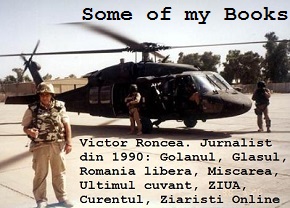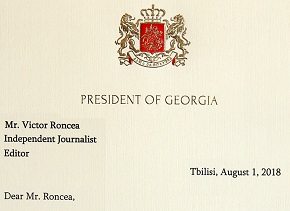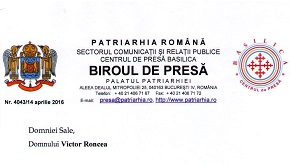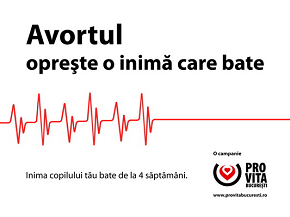 Un studiu CIA certifica: disidentii au fost recrutati de KGB
Un studiu CIA certifica: disidentii au fost recrutati de KGB
Tot cotroboind prin biblioteca CIA legata de spatiul Europei Rasaritene am dat peste o analiza pertinenta a expertului CIA (considerat de Securitate, pe cand era mai tanar, agent de teren al CIA, conform Dosarului lui Corneliu Coposu de la CNSAS), istoricul Larry Lee Watts. L-am cunoscut pe Larry Watts la inceputul anilor ’90, parca prin 1993, cand si eu revenisem in tara, temporar, din SUA. Pe vremea aceea Larry fusese trimis sa infiinteze PER-ul (a carui misiune a fost deturnata ulterior intr-o directie daunatoare unei conlucrari firesti). I se oferise resedinta pe care Ceausescu i-o punea la dispozitie lui Arafat cand venea la Bucuresti si era fascinat de acest fapt. Avea cea mai bine dotata biblioteca cu un continut autentic romaneasc pe care am vazut-o vreodata la un strain. Cu o bibliografie pe problematicile romanesti impresionanata, unul dintre cei mai buni cunoscatori ai Romaniei reale si un fin analist atat al istoriei inter si post-belice cat si a celei recente, Larry Watts, din pacate, nu mai este atat de prezent in tara sa adoptiva. Analiza de mai jos trateaza reformele din serviciile secrete foste comuniste ale Europei Centrale si de Sud Est. Am selectat doar aspectele care privesc direct Romania, cu o importanta ridicata inclusiv la momentul actual. Aflati de exemplu din studiul de mai jos cum influenta KGB asupra intelectualilor si disidentilor din Romania a afectat ulterior climatul de incredere a vestului, misiunile occidentale de securitate si dezvoltarea normala a tarii. Situatia este valabila si astazi, cand agenti rusi conspirati in haine de oaie americana dau tarcoale asiduu Cotrocenilor. In notele de subsol veti afla si de un anume “agent Volodea”, foarte activ pentru rusi, in medii intelectuale, precum si faptul ca Magureanu, fost ofiter de Securitate pe deplin conspirat, ca si alti disidenti, se afla in relatii stranse cu KGB, prietenii dezvaluite de serviciile occidentale Bucurestiului doar in 2003 (!).
Info
Intelligence Reform in Europe’s Emerging Democracies
Conflicting Paradigms, Dissimilar Contexts
Larry L. Watts
Intelligence reform is a critical element of democratization, but it is frequently relegated to the back burner in the early days of post-authoritarian regime transitions. This is due, in part, to a reflexive aversion to what was commonly the most brutal legacy of the former regimes. Transition populations tend to favor the destruction of intelligence apparatuses, not their reform.
In the post-communist transitions in central and eastern Europe, competing priorities also distracted attention from intelligence reform as political, economic, and other security institutions simultaneously underwent changes. Western biases shaping the packaging of reform assistance added to the relative neglect of intelligence. The West’s early focus on market economy formation instead of the establishment of rule of law, as well as its pronounced unwillingness to assist what were still considered the “instruments of repression,” kept intelligence near the bottom of the reformist agenda during the first few years of transition.
The mechanics of intelligence liaison relationships between the West and the former communist states perpetuated this “hands off” attitude. Liaison officers sent into the region were chiefly responsible for obtaining information of use to their countries. They were not sent to advocate or undertake the reform of local intelligence structures and practices. If information was flowing in a satisfactory manner, the unintended consequence was a distinctly anti-reform ethos driven by the logic: “If it ain’t broke, don’t fix it.”
Given recurrent intelligence and “political policing” problems in the transition states, it was inevitable that reform in those domains would eventually become a western priority, particularly after NATO opened its doors to new members in 1993. Unbridled political competition within the post-communist states, where the rules of the game were still in contention and abuses of executive power common, heightened concerns regarding the impact of partly reformed or unreformed intelligence services on an enlarged western alliance.
Unfortunately, the West’s attempts to evaluate the intelligence reform process in the various states of the region were handicapped by the differences among the new democracies, which limited comparative analysis;1 by the inappropriateness of western models developed under different political, social, and economic circumstances; and by the failure of western analysts to recognize that the post-Cold War revolution in intelligence affairs conflicts in many respects with the classic model of intelligence reform. This article examines these challenges.
(…)
Context of Reform in Eastern Europe
The few institutionalized cooperative intelligence arrangements that existed prior to the end of the Cold War could be divided into two categories: those that grew out of historically and culturally conditioned voluntary alliances, and those that resulted from direct subordination of a service to a foreign state. The first category was largely confined to the Anglophone states– the United States, the United Kingdom, Canada, Australia, and New Zealand. The second category included the Bulgarian, Czechoslovak, East German, Hungarian, Polish, and Romanian intelligence services, which had been directly subordinated to the Soviet NKVD/KGB since the late 1940s.14
Early post-Cold War attempts to establish broader cooperation illustrate the continuing “bleed over” of Cold War mentalities and rules of the game into the new environment. For example, in May 1993, the United States and Romania co-sponsored the first joint meeting of Black Sea intelligence services in Romania. Although by many measures the meeting was considered a success, the CIA representative delegated to chair the meeting accused his Romanian co-sponsor of breaking into his briefcase during the proceedings, thereby scuttling the initiative and setting the US-Romanian intelligence relationship back several years.15 The CIA representative, Aldrich Ames, was later exposed as a Soviet/Russian double agent. Other intelligence cooperation initiatives launched since 1989 include the Dutch-sponsored Middle European Conference in 1994 and two Romanian-sponsored conference series, one bringing together the Balkan services and the other NATO and candidate-member services in 2002.16
A number of conditions sharply differentiated the post-1989 intelligence reform efforts of central and eastern Europe from earlier reform in the West. Among the most important were: an appreciably less benign security environment; the fragility of new political regimes and their institutions, along with the democratic values and norms that underpin them; the profound lack of intelligence expertise and competing priorities for reform attention and resources; foreign control of local intelligence services; the availability of outside assistance; and the widespread perception of legacy institutions as “the enemy” to be vanquished and of legacy personnel as criminals from whom an accounting was demanded. Each of these conditions affected intelligence reform.
(…)
National Control and Loyalty
Analysts have continued to air concerns about “Russian penetration and vested interests” in Bulgarian intelligence because of Sofia’s traditionally close relationship to Moscow.26 This problem persisted right up until the second wave of NATO enlargement–the replacement of intelligence reformers and the reappearance of Soviet/Russian-trained intelligence officers in positions of leadership and influence threatened to block the NATO membership bids of both Slovakia and Bulgaria in 2003.27
In addition to NATO integration, Soviet and Russian influence over intelligence bodies had important ramifications for internal democratization in eastern Europe. The states that negotiated their revolutions–Hungary, Poland, and, initially, Czechoslovakia–“grandfathered in” substantial numbers of personnel from the former regimes as part of the negotiation process, which caused considerable apprehension in NATO both before and after their accession.28Thus, establishing sovereign national control over the domestic security apparatus and the loyalty of its personnel became major objectives of post-communist reform efforts.
Romania’s situation was somewhat the reverse of its regional confreres, with residual Russian influence stronger among intellectual and dissident groups than within the security services, a circumstance that affected post-communist intelligence missions, personnel, and institutional culture.29 Romania had made significant strides toward getting out from under Moscow’s thumb in the 1960s. According to a former NATO intelligence service director responsible for monitoring the activity of Soviet bloc services during the Cold War, this break ended the participation of Romanian intelligence officers in joint operations with the KGB and GRU.30 Bucharest even went so far as to create departments that specialized in anti-KGB counterespionage, underscoring the difficult relationship with Moscow.31
Since Romania’s communist leadership had usurped the national banner when the country became autonomous, the goals and activities of anti-government activists in succeeding years inadvertently made them “natural allies” of Moscow, which targeted many for recruitment.32 Judging from the size of its embassy cultural section, Soviet efforts to influence dissident intellectuals increased during the last years of Ceausescu’s reign.33 In one supremely self-serving operation mounted in the immediate aftermath of Romania’s 1989 revolution, a demonstration was whipped up and maintained for several days in front of the previously secret office of the Securitate’s anti-KGB unit calling for the unit’s dissolution as a “repressive organ.” Unable to dissuade the demonstrators and fearing bloodshed, the new leadership disbanded the unit. Romania did not recreate a counterintelligence unit for combating the operations of hostile foreign services until 1994. (Si a desfiintat-o din nou in 2008! – Nota mea)
The Role of Western Assistance
NATO, which lacks a standing intelligence capability beyond support for combat operations, was not a natural institutional model for intelligence reform. Nonetheless, the alliance played an indirect role by establishing criteria for membership that were subsequently fulfilled to a greater or lesser degree by the entire group of former Warsaw Pact transition states (with the exception of Russia). The availability of outside assistance, particularly from an international alliance that the new leaders and populations of central and eastern Europe wanted to join, proved extremely valuable for reforming intelligence bodies.
The imperative for intelligence services to cooperate rather than compete with each other against the variety and multiplicity of post-Cold War threats also proved a major boon to intelligence reform in central and eastern Europe. Cooperation has required the creation of mechanisms for judging the effectiveness and control of services in the emerging democracies and has provided experience to officers of those services regarding the organization and procedures of more effective and better-controlled western services. It has even created an informal set of common standards. The demands of procedural interoperability in the new security environment have already contributed to the success of these services in adapting to the new paradigm.
Testing Loyalty
For the first decade after the collapse of communism, citizens’ memory of former secret police organs continued to dog the reputation and image of most of the post-communist intelligence services. (…) The argument for maintaining continuity of personnel is perhaps strongest for foreign-intelligence operations. The principal comparative advantage of the technologically-challenged and resource-poor services of the post-communist space is their human intelligence (HUMINT) capacity, particularly in areas of the world where terrorism and trafficking flourish. Since HUMINT is based above all on personal relationships, the replacement of all personnel necessarily destroys that capability over the short and medium terms. Therefore, in central and eastern Europe, parties interested in destroying the effectiveness of the intelligence services joined in the chorus with those advocating the complete removal of legacy personnel for the more noble reason of a democratic fresh start. The exhortations of NATO and other Western institutions were often misrepresented as calling for the replacement of all experienced personnel when their concerns were confined to individuals previously involved in human rights abuses or operations against NATO, or those with questionable allegiance, since they would be handling NATO classified information.39
All of the emerging democracies have reduced the number of personnel in domestic security intelligence, primarily because their all-purpose security apparatuses were divided up to varying degrees into separate institutions with more specific tasks. Some also initiated a vetting–or lustration–process to purge the new services of personnel compromised either by their actual involvement in abusive actions or by their affiliation with sub-structures within the security apparatus most associated with repressive political policing.
Romania was the first of the communist transition states to initiate a formal vetting of intelligence personnel–the culling began immediately after the security apparatus was subordinated to the defense ministry at the end of December 1989.40 The process, completed at the beginning of February 1990, found 4,944 out of 15,312 personnel acceptable for re-employment in the new intelligence service. A further cut of 800 personnel that same month resulted in the re-employment of 4,144 (28 percent) of the ex-Securitate personnel in the new security intelligence service (SRI).41 (…) Only Romania’s SRI had significant new blood, but, even there, ex-Securitate members made up 60 percent of the personnel. Moreover, the SRI’s first director not only was a former Securitate officer but also had willfully concealed his background to get the post. (…)
Romania decreased the weight of ex-Securitate personnel in its SRI from 60 percent in 1990 to 36 percent in 1994, and then to less than 20 percent in 1999. By 2003, it retained only 15 percent of its former security apparatus personnel. (…)(Astazi SRI afirma ca mai are in sistem circa 120 de fosti ofiteri ai DSS – nota mea)
Problems with Vetting
(…)While all Securitate officers were ousted from Romania’s military intelligence service immediately after the revolution, vetting of its foreign-intelligence personnel was so poor during 1990-92 that an officer identified as having been doubled by the Soviet Union (and France) in the 1960s was appointed as the first head of the new institution in January 1990 (Mihai Caraman – SIE – nota mea).51 Consistent intelligence failures during this officer’s tenure prompted his replacement in 1992, and the number of former Securitate officers was subsequently reduced to 18 percent of the foreign-intelligence service by 2003.
The lack of complete records on which to base vetting decisions and the malleable nature of evaluation criteria also undermined the credibility of the process. Many files were destroyed, lost, or stolen during the transition, making the process haphazard at best.52 In addition, security personnel subject to vetting were generally savvier than those carrying it out and were often able to manipulate the process.
The legitimacy of those carrying out the vetting was also problematic. None of the members of the civic groups involved in vetting and lustration first submitted themselves to verification. (CNSAS – Dinescu, Plesu, Patapievici – nota mea) In some cases, the vetting boards were dominated by “expert” former officers of the communist security apparatus. The first chief of Czechoslovakia’s post-communist intelligence service, for example, denounced the Civic Forum experts that carried out the process as “morally discredited” because two of the three persons on the citizens’ committees that made vetting decisions were ex-StB officers, while ex-StB personnel made up 17 of the 23 persons on the expert panel that advised them.53
The highly subjective and politicized nature of the vetting and lustration process, and media exploitation of the issue, reduced its impact on intelligence personnel rosters. Even where the targets of lustration were high-profile politicians, the process was not successful in implementing change. Hungarian Prime Ministers Gyula Horn and Peter Medgyessy did not pass vetting, for example, but neither was compelled to resign. At the same time, spurious charges were launched in the press against Polish President Lech Walesa and Prime Minister Aleksandr Kwasniewski, Romanian President Ion Iliescu, and a host of domestic- and foreign-intelligence chiefs in the region. (…)
Conclusion
Evaluating intelligence reform in the emerging democracies of central and eastern Europe is complicated by their simultaneous response to conflicting security paradigms, their varying reform contexts, and the often very different criteria used by the evaluators, ranging from the ridiculous–the presence or absence of scandal–to the sublime–the extent of actual democratic oversight and real operational effectiveness. (…)
The dynamism inherent in countries adapting to two contradictory reform paradigms adds immensely to the challenges facing the intelligence analyst, challenges already complicated by the substantial differences among the services of central and eastern Europe that prevent straightforward comparisons. How does one evaluate the salience of personnel vetting for intelligence sharing when the group of services includes one that was independent before 1989 along with six that were directly subordinated to Moscow until 1989-91? How can analysis factor in the effect of western expertise and material assistance that some have received since 1990, but others only since the middle or end of the decade? How does one judge the political neutrality of services in different parliamentary, presidential, and semi-presidential systems?
A new template must be developed to gauge intelligence reform in the post-communist countries. (…)
Footnotes
1. Regarding Romania, for example, see V. G. Baleanu, The Enemy Within: The Romanian Intelligence Service in Transition (Camberley, UK: Royal Military College Sandhurst, Conflict Studies Research Centre, January 1995); V. G. Baleanu, A Clear and Present Danger to Democracy: The New Romanian Security Services Are Still Watching (Camberely, UK: Royal Military College Sandhurst, Conflict Studies Research Centre, 1996); and Dennis Deletant, “The Successors to the Securitate: Old Habits Die Hard,” in Kieran Williams and Dennis Deletant, eds., Security Intelligence Services in New Democracies: The Czech Republic, Slovakia and Romania (New York, NY: Palgrave, 2001).
2 Elizabeth Rindskopf Parker, The American Experience: One Model for Intelligence Oversight in a Democracy (Cambridge, MA: Harvard University, Project on Justice in Times of Transition, 15 October 2001), p. 1.
3. Intelligence Services and Democracy, Working Paper Series No. 13 (Geneva, Switzerland: Geneva Centre for Democratic Control of Armed Forces, April 2002), pp. 1-2.
4. Swedish citizens became aware of their service in 1973 as the result of public scandal. Until quite recently, the existence of the US National Security Agency was officially denied, despite general public knowledge of it.
5. The Act of 1949 also established the Department of Defense and a number of other fundamental structures and hierarchies in the national security sphere. Michael Warner, Central Intelligence: Origin and Evolution (Washington, DC: Center for the Study of Intelligence, Central Intelligence Agency, 2001).
6. See, for example, Athan Theoharis, Spying on Americans: Political Surveillance from Hoover to the Huston Plan (Philadelphia, PA: Temple University Press, 1978). Reforms introduced as a result of abuses are described in John T. Eliff, The Reform of FBI Operations (Princeton, NJ: Princeton University Press, 1979); and Loch K. Johnson, America’s Secret Power: The CIA in a Democratic Society (New York, NY: Oxford University Press, 1989). especially pp. 133-255.
7. See Johnson, America’s Secret Power, and Glenn Hastedt, ed., Controlling Intelligence (London, UK: Frank Cass, 1991).
8. In Sweden, for example, the Defense Intelligence Operations Committee was set up in July 1976 following the 1973 “IB-Affairen” scandal. Geoffrey Weller, “Political Scrutiny and Control of Scandinavia’s Security and Intelligence Services,” International Journal of Intelligence and Counterintelligence 32, no. 2 (Summer 2000), p. 181.
9. Alain Faupin, “Reform of the French Intelligence Services After the End of the Cold War,” paper presented at the workshop on “Democratic and Parliamentary Oversight of Intelligence Services,” Geneva, Switzerland, 3-5 October 2002, Geneva Centre for the Democratic Control of Armed Forces, pp. 6-10; and Jean-Paul Brodeur and Nicolas Dupeyron, “Democracy and Secrecy: The French Intelligence Community,” in Jean-Paul Brodeur, Peter Gill, and Dennis Tollborg, eds., Democracy, Law, and Security: Internal Security Services in Contemporary Europe (Burlington, VT: Ashgate, 2003), pp. 19-23.
10. Paul Swallow, “International Police Cooperation and the Interface with the Security Services,” paper presented at the conference “Intelligence and Security Services in the 21st Century Security Environment,” 26-28 September 2002, Snagov, Romania, p. 5.
11. Ibid. As Swallow notes: “Given their role in defending the interests of their nation-states, often from espionage, there is no formal mechanism for them to cooperate internationally.”
12. Gregory F. Treverton, Reshaping National Intelligence for an Age of Information (Cambridge, UK: Cambridge University Press, 2001), p. 249.
13. Michael Herman, “Intelligence After 9/11: A British View of the Effects,” in Commentary (a publication of the Canadian Security Intelligence Service), no. 38 (Summer 2003), p. 7.
14 Romania weaned its services from Soviet control in the 1960s, while the other services remained under Soviet control until 1989-91.
15. Derrin Smith, “US Intelligence on Romania–Affected by Traitors Nicholson and Ames?” in AFIO Weekly Intelligence Notes #49-00, 8 December 2000, section IV.
16. The NATO-designated Dutch representative who played a critical role in setting up these meetings was subsequently tried for attempting to transfer potentially illicit funds into Romania, resulting in a press scandal in Romania and the Netherlands that sought to discredit many of the same people who were trying to build a closer US-Romanian intelligence relationship in 1993.
17 Many successor states (Serbia, Croatia, Bosnia-Herzogovina, Macedonia, Republic of Moldova, and Transnistria) became embroiled in civil conflict, were plagued by economic crisis, and faced the possibility of political collapse throughout the 1990s. Economic and political instability in Russia, Ukraine, and Belarus fueled insecurity in the already threat-rich environment.
18. For example, in an NBC broadcast of 24 December 1989, US Secretary of State James Baker expressed American support for Soviet intervention in Romania during the then-occurring revolution that overthrew Nicolae Ceausescu. Strobe Talbott and Michael Beschloss, At the Highest Levels: The Inside Story of the Cold War (Boston, MA: Little, Brown, 1993), p. 170 of 1994 paperback version. For Austrian and German support of the Yugoslav breakup, see Susan L. Woodward, Balkan Tragedy: Chaos and Dissolution After the Cold War (Washington, DC: Brookings, 1995), pp. 105, 146-190.
19. Council of the National Salvation Front, Decree No. 33 Regarding the Suspension of the Department of State Security, 30 December 1989; and Provisional Council of National Unity, Decree No. 181 Regarding the Establishment of the Romanian Intelligence Service, 26 March 1990.
20. Lawrence Lustgarten, “National Security and Political Policing: Some Thoughts on Values, Ends and Law,” in Jean-Paul Brodeur, Peter Gill, and Dennis Tollborg, eds., Democracy, Law and Security: Internal Security Services in Contemporary Europe, p. 331.
21. Ibid., pp. 332-33. Referring to the security intelligence domain in transition states, Lustgarten argues that a “fragile democracy may reasonably take measures that would be grossly excessive in a more secure political order,” with the provision that: “As democratic institutions and allegiances become more deeply-rooted, the tolerance of risk should steadily increase.”
22. Intelligence Services and Democracy, p. 16.
23. Nikolai Bozhilov, “Reforming the Intelligence Services in Bulgaria: The Experience of the Last Decade,” paper prepared for workshop on “Democratic and Parliamentary Oversight of the Intelligence Services,” Geneva Centre for Democratic Control of Armed Forces, 3-5 October 2002, p. 10.
24. Kieran Williams, “Czechoslovakia 1990-92,” in Williams and Deletant, p. 64.
25. Kieran Williams, “Slovakia since 1993,” in Williams and Deletant, p. 145.
26. Bozhilov, p. 11.
27. “Security Concerns in Bulgaria” and “Slovakia: NBU Chief Sacked,” in Jane’s Defense Intelligence Weekly, 8 October 2003.
28. Jane Perlez, “Touchy Issue of Bigger NATO: Spy Agencies,” New York Times, 4 January 1998; and “Spionage bei Freunden,” Der Spiegel, 6 April 1998.
29 US 98th Congress, Senate, Committee of the Judiciary, “Communist Bloc Intelligence Activities in the United States,” testimony of former Czechoslovak StB officer, Josef Frolik, 18 November 1975.
30. Interview with Tjeerd Sbbeswijk Visser, former director of Dutch Intelligence and president of the Europe 2000 Association, by Radu Tudor, “Traditia anti-KGB a Romaniei poate fi un avantaj in cursa pentru integrare [Romania’s Anti-KGB Tradition Can Be an Advantage on its Integration Path],” Ziua, 8 June 2002. Set up in 1989-90, Europe 2000 assists reform of law enforcement and intelligence bodies in the former communist space. A number of journalists and commentators in the Romanian press reject any difference between Romania and the rest of the Warsaw Pact in intelligence cooperation with the KGB. See, for example, Dan Pavel, “Imunitatea politica a Securitatii [The Political Immunity of the Securitate],” Ziua, 4 November 2002.
31. The Romanian services supplied advanced Soviet technology to the United States beginning in the late 1970s. Benjamin Weiser, “One that Got Away: Romanians Were Ready to Sell Soviet Tank,” The Washington Post, 6 May 1990.
32.The loyalty of Romania’s first head of domestic intelligence, Dr. Virgil Magureanu, was suspect for these reasons. Magureanu was named to the post in March 1990 primarily on the basis of his “dissident” status when teaching at the communist party’s social science academy during the 1980s. He hid his previous membership in the Securitate from the authorities that named him to the post (an affiliation exposed in the press only years later). Immediately after his appointment, in April 1990, he met secretly with KGB Chief Evghenii Primakov without informing political authorities in Romania. The Romanian presidency and government remained unaware of Magureanu’s Soviet contacts until 2003, when the Western services that monitored those contacts informed Bucharest. Magureanu’s activities, the fact that the CIA chief in Bucharest during 1990-92, Harold James Nicholson, was later exposed as a Soviet agent, and the 1993 Ames incident, effectively rendered closer intelligence relations with the West impossible during the first half of the 1990s.
33.One Russian agent, known as “Volodya,” was particularly active with journalists and intellectuals in the mid- and late-1980s. Individual Securitate officers were still targeted and turned the old fashioned way, but institutionalized penetration of the services was ended and service relations discouraged. Securitate officers working under diplomatic cover abroad, for example, were forbidden to accept any invitations to Soviet embassy functions.
34. Bozhilov, “Reforming the Intelligence Services in Bulgaria,” p. 11.
35. Web site for Czech security intelligence service: https://www.bis.cz/eng/a_index.html (accessed on 30 May 2003).
36 They were able to accomplish their goal by radically downsizing their service– from around 7,000 personnel to 1,000– primarily by transferring units to other security institutions, including the interior ministry, and restricting the new security intelligence service to purely local concerns.
37. Dan Eggen, “Turnover Hinders Reorganization of FBI,” The Washington Post, 4 August 2002.
38. Williams, “Czechoslovakia 1990-92,” in Williams and Deletant, p. 69.
39.See, for example, Dan Tapalaga, “Romania, Indemnata Sa Scape de Securisti [Romania, Required to Rid Itself of Securitate officers]” Evenimentul Zilei, 27 October 2003.
40. Council of the National Salvation Front, Decree no. 4 on Transferring the Department of State Security and other bodies from under the Ministry of Interior to the Ministry of National Defense, 26 December 1989.
41. Gen. Victor Stanculescu presented the personnel figures for the fifth and sixth directorates (VIP protection and military counterintelligence) shortly after his appointment as Defense Minister in February 1990. SRI Director Magureanu gave a fuller accounting in his first report to parliament in November 1990, although he apparently undercounted personnel by about 1,000. See, for example, Deletant, “The Successors to the Securitate,” in Williams and Deletant, pp. 215-17. The SRI has since reconstructed a more accurate roster and made it public.
42.Williams, “Czechoslovakia 1990-92,” in Williams and Deletant, p. 60.
43 Andrzej Rzeplinski, “Security Services in Poland and their Oversight,” in Brodeur et al., p. 112.
44 Istvan Szikinger, “National Security in Hungary,” in Brodeur, et al., p. 92.
45. Rzeplinski, “Security Services in Poland,” in Brodeur et al., p. 112; Williams, “Czechoslovakia 1990-92” in Williams and Deletant, pp. 62-3; and Oldrich Czerny, “Czechoslovak (Czech) Intelligence After the Cold War,” paper presented at workshop on “Democratic and Parliamentary Oversight of Intelligence Services,” Geneva Centre for the Democratic Control of Armed Forces, 3-5 October 2002, pp. 4-5.
46 Rzeplinski, “Security Services,” in Brodeur, et al., p. 112.
47. Williams, “Czechoslovakia 1990-92,” in Williams and Deletant, pp. 57-59, 73-76. See also Helga A. Welsh, “Dealing with the Communist Past: Central and East European Experience after 1990,” Europe-Asia Studies 48, 3 (1996), pp. 413-28; and John Torpey, “Coming to Terms with the Communist Past: East Germany in Comparative Perspective,” German Politics 2, 3 (December 1993), pp. 415-35.
48. Tomas Horejsi, “Minister Tvrdik to Replace Army Intelligence Chief,” Lidove Noviny, 8 April 2003, https://www.fas.org/irp/world/czech/armyint.html (accessed on 4 November 2003).
49 Williams, “Czechoslovakia 1990-92,” pp. 64-65, “The Czech Republic since 1993,” p. 111, in Williams and Deletant.
50. Rzeplinski, “Security Services in Poland,” in Brodeur, et al., pp. 112, 115.
51. Former Securitate officer Mihai Caraman was named to head foreign-intelligence in January 1990 on the proposal of Prime Minister Petre Roman, despite the fact that he had been identified as a Soviet agent in 1979 and then publicly exposed by a Securitate defector in his book whose contents were broadcast into Romania before 1989. See archives of the Romanian Intelligence Service, collection D, file 11200, vol. 37, pp. 2-5, and vol. 35, pp. 309-316, as cited in Mihai Pelin, Culisele Spionajului Romanesc: D. I. E. 1955-1980 (Bucharest: Editura Evenimentul Romanesc, 1997), pp. 272-76, 306-07. Also, Ion Pacepa, Red Horizons: Chronicles of a Communist Spy Chief (Washington, DC: Regnery Gateway, 1987).
52. According to press reports, SRI Director Virgil Magureanu sold some files of extreme-right leader Corneliu Vadim Tudor for five paintings in the early 1990s. Razvan Savaliuc, “Tribunul recunoaste ca l-a mituit pe Magureanu [The `Tribune’ Admits that He Bribed Magureanu],” Ziua, 7 November 2003. Magureanu illegally published part of his own file in 1992. It then “disappeared” from the archives, as did the microfilm roll on which it had been copied.
53. Williams, “Czechoslovakia 1990-92,” in Williams and Deletant, pp. 60-61.
Larry L. Watts a former Rand consultant and adviser on military reform to the Romanian Defense Ministry, advises the Romanian government on intelligence matters.
[Studiul Integral AICI – Top of page]
CIA Home > Library > Center for the Study of Intelligence > CSI Publications > Studies in Intelligence > studies > vol48no1 >
Historical Document
Posted: Apr 14, 2007 07:59 PM
Last Updated: Jun 27, 2008 06:56 AM
Last Reviewed: Apr 14, 2007 07:59 PM
“Profesorul” Volodya Tismaneanu, un mare O in Biblioteca CIA
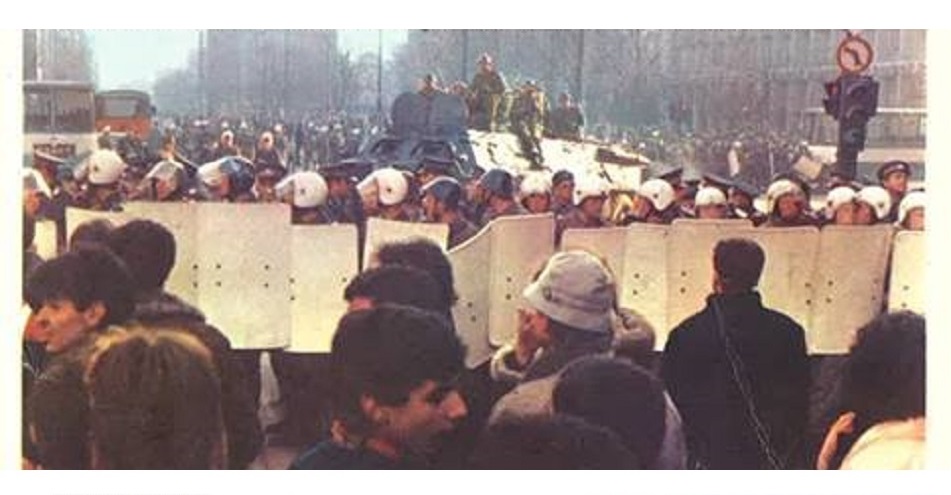
 July 12th, 2008
July 12th, 2008  VR
VR 
 Posted in Uncategorized
Posted in Uncategorized  Tags:
Tags: 









